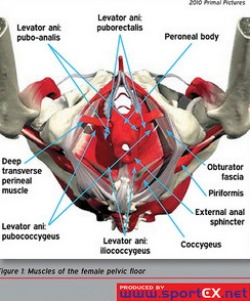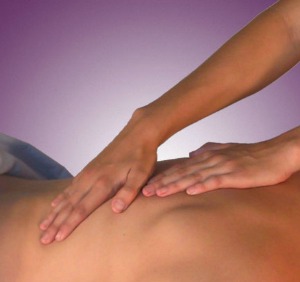As an Amazon Associate and affiliate with other programs, I may earn revenue from qualifying purchases through affiliate links. This does not affect the price you pay. Privacy Policy / Disclosures. This site is for educational purposes only.
Exercises for Pelvic Floor Muscles
Exercises for pelvic floor muscles can help relieve chronic pelvic pain and problems that range from general pain to irritable bowel syndrome to incontinence to discomfort during sex for both women and men
What Is the Pelvic Floor?
The pelvic floor consists of all the muscles, connective tissue, ligaments, and nerves, attached to the front, back, and sides of the pelvis, from the pubic bone in the front of the body to the tailbone in the back. The pelvic floor is like a sling that supports all the pelvic organs, including the bladder, colon, and uterus in women or prostate in men.
The pelvic floor has three main functions:
- Supports the organs in your pelvis and lower abdomen
- Controls the urge to urinate or defecate by sending signals to the bladder and colon and opening and closing the urethra and anal canal
- Contracts muscles in response to sexual arousal and enhances sexual enjoyment.
Unfortunately, such a complex structure is prone to dysfunction in both women and men, though women more frequently have problems. Many factors can compromise the function of the pelvic floor, including inflammation, infection, trauma (injury, surgery, abuse, childbirth) and a variety of mechanical conditions ranging from weak muscles to spinal and pelvic misalignment.
Weak muscles are common, however, so are tense muscles. Factors that place pressure on the pelvic floor
and can weaken it include excess weight, ongoing constipation, and a
chronic cough.
Pelvic floor disorders that can benefit from exercise include pelvic pain, endometriosis, prostatitis, incontinence, irritable bowel syndrome, and uncomfortable sex, urination, or bowel movements.
Exercises for Pelvic Floor Muscles
For self care of pelvic pain problems, I recommend Heal Pelvic Pain: The Proven Stretching, Strengthening, and Nutrition Program by Amy Stein, a physical therapist who specializes in manual therapies for pelvic floor disorders and pain.
Stein offers suggestions for exercise, nutrition, and self-care of pelvic floor problems. Almost anyone can use these natural healing techniques at home to address the underlying causes of pelvic pain and dysfunction.
Stein's self-treatment program for pelvic dysfunction begins with 11 "letting go" pelvic floor exercises designed to release tension. Why? Tensing muscles is an unconscious and automatic reaction to stress. Muscles of the pelvic floor often become chronically tense, making them weak, which leads to pain, which leads to more tension and more pain, creating a vicious cycle.
Stein recommends adding pelvic floor strengthening exercises when pain has decreased by at least 50 percent and other symptoms have improved. Kegels, in a number of different variations, are the basis of pelvic floor strength exercises.
Although many health sources promote Kegel exercises as "the way" to deal with problems, Stein believes that strengthening muscles before releasing tension is counterproductive. First relaxing the muscles makes the strengthening exercises more effective.
Basically, a Kegel is a subtle contracting and releasing of the muscles of the pelvic floor. It’s important to learn the correct technique to make sure you work with the correct muscles and not the large surrounding muscles of the buttocks, thighs, and abdomen.
Stein also teaches simple self-massage techniques to help you massage away the tension in your pelvic floor and offers nutritional guidelines to promote healing of pelvic floor problems. If you deal with pain, incontinence, or other pelvic problems, Stein's book offers an alternative to medications that only cover up symptoms.
Pelvic Floor Exercise for Women
Childbirth places a lot of stress on the pelvic floor muscles. Women who exercise these muscles before and after giving birth are less likely to experience problems such as urine leakage and uterine prolapse. Kegel Exercises: A How-To Guide for Women from the Mayo Clinic.
Yoga has a lot to offer. See Pelvic Floor Yoga for Women: Simple Poses for Healing Your Body and Boosting Strength by Christina D'Arrigo or Pussy Yoga: Pelvic Floor Training for Radiance, Confidence, and a Fulfilling Love Life by Coco Berlin.
Male Pelvic Floor Health
The male pelvic floor muscles control urination, defecation, and sexual function. Men who have a problem in any of those areas can benefit from men's pelvic floor exercises.
Men's Kegel Exercises from the Mayo Clinic
Suggested books: Male Pelvic Fitness: Optimizing Sexual & Urinary Health by Andrew L Siegel, MD, or A No-Bullshit Guide for Men Navigating Through Pelvic Pain by Susie Gronski, PT, DPT.
Two-Part Video: A Urologist Talks About Exercises for Pelvic Floor Muscles
Photo Credit: SportEX Journals CC






